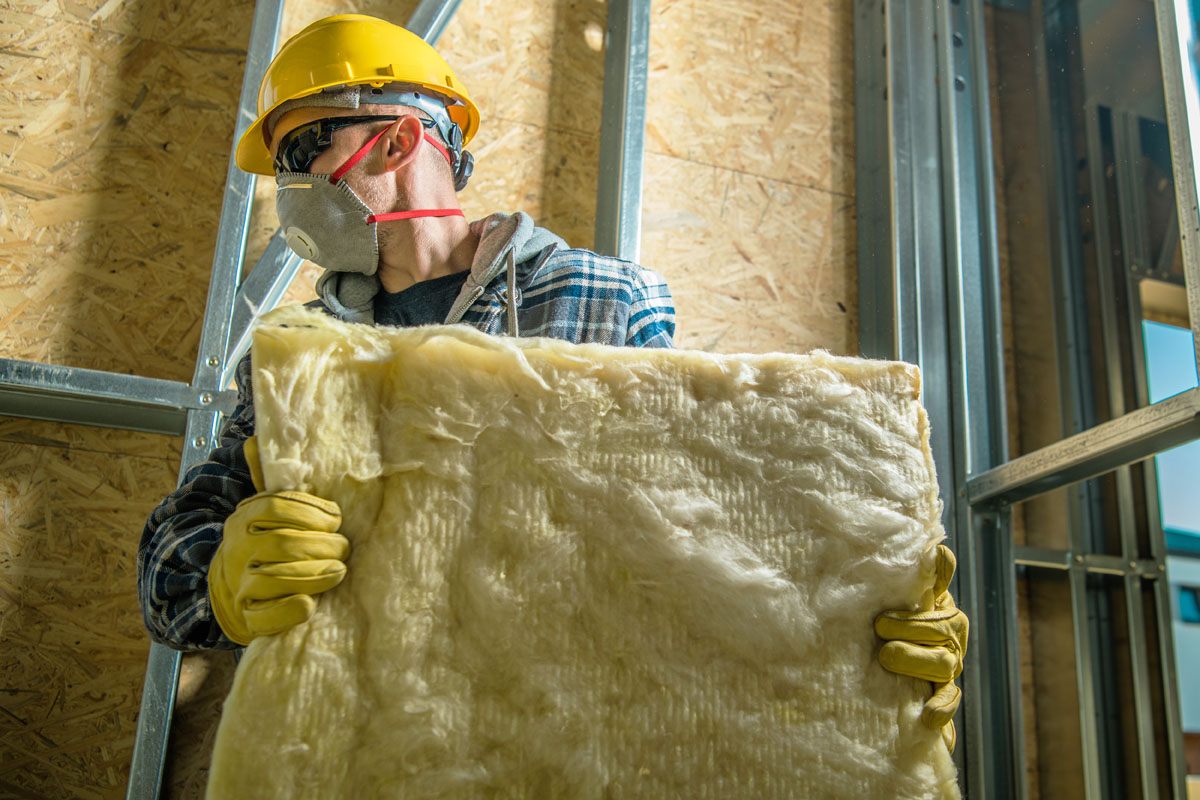
Insulation in your home gives resistance to heat flow and decreases your heating and cooling expenses. Correctly insulating your home not only decreases heating and cooling expenses; however, additionally improves comfort.
How Insulation Works
To comprehend how insulation works it helps to comprehend heat flow, which includes three primary means — conduction, convection, and radiation. Conduction is the fashion in which heat travels through materials, similar to when a metal stirrer placed in a hot cup of tea conducts heat from its handle to your hand. Convection is the fashion in which heat travels through gases and liquids, and is the reason that light, warm air rises, and cool, dense air falls in your home. Radiant heat moves in a direct line and heats anything dense in its way that is going to absorb its energy.
Most typical insulation material operates by decreasing conductive and convective heat flow. Reflective insulation systems and radiant barriers operate by decreasing radiant heat increase. For effectiveness, the reflective area is required to be bordering an air space.
Without regard to the means, heat flows from warmer to cooler places until the temperature variation dissipates. In your home, meaning that in colder months, heat flows directly from all heated living areas to adjacent un-heated garages, attics, basements, and particularly to the outside. Heat flow can also move implicitly via interior ceilings, walls, and flooring–wherever there is a variation in temperatures. Throughout the cooler months, heat flows from the outside to the inside of your home.
For maintaining comfort, the heat wasted in the winter is required to be recovered by your homes heating system and the heat accumulated in the warmer months is required to be eliminated by your homes cooling system. Correctly insulating your home is going to reduce this heat flow by providing a strong resistance to the flow of heat.
R-Values
The insulation’s resistance to conductive heat flow is calculated or rated in regard to its R-value — the greater the R-value, the better the insulation effectiveness. The R-value is subject to the type of insulation, how thick it is, and its denseness. The R-value of a lot of insulations additionally depends on temperature, its age, and moisture collection. When measuring the R-value of a multiple-layered installation, add the R-values of the separate layers.
Installing additional insulation in your home heightens the R-value and its resistance to heat flow. Generally, increased insulation thickness is going to increase the R-value proportionally. Nevertheless, as the installed thickness increases for loose-filled insulation, the set density of the material advances because of compression of the insulation due to its own weight. Due to this compression, loose-filled insulation R-value is not going to change in proportion with thickness. To establish how much insulation you require for your climate, speak with a local insulation contractor.
The efficiency of an insulation material’s resistance to heat flow additionally is subject to the way and the place in which the insulation is installed. For instance, compressed insulation is not going to provide its total rated R-value. The general R-value of ceilings or walls is going to be slightly different from the R-value of the insulation itself due to heat flowing more easily through studs, joists, and other structure materials, in an occurrence referred to as thermal bridging. Additionally, insulation that fills building crevices decreases airflow or leakage, saving energy.
Unlike conventional insulation materials, radiant barriers are highly reflective materials that re-transmit radiant heat instead of absorbing it, decreasing cooling loads. Therefore, radiant barriers have no integral R-value.
Even though it is feasible to measure an R-value for a particularly reflective insulation or radiant barrier installation, the productivity of these systems consists in their proficiency to decrease heat gain by reflecting heat away from the living area.
The quantity of insulation or R-value you are going to require is subject to your climate, kind of HVAC system, and the area of your home you plan on insulating.
MK Design And Build In Phoenix, Arizona
MK Design And Build, located in Mesa, Arizona, specializes in residential construction, providing clients with state-of-the-art technology combined with cost-effective building methods. MK offers a variety of styles and designs for you to use as a starting point in your home building journey. With an extensive library of existing plans to choose from, we’ve organized them into 4 Series to facilitate the shopping experience: Classic, Vintage, Contemporary and Craftsman. Contact MK Design and Build right here!
